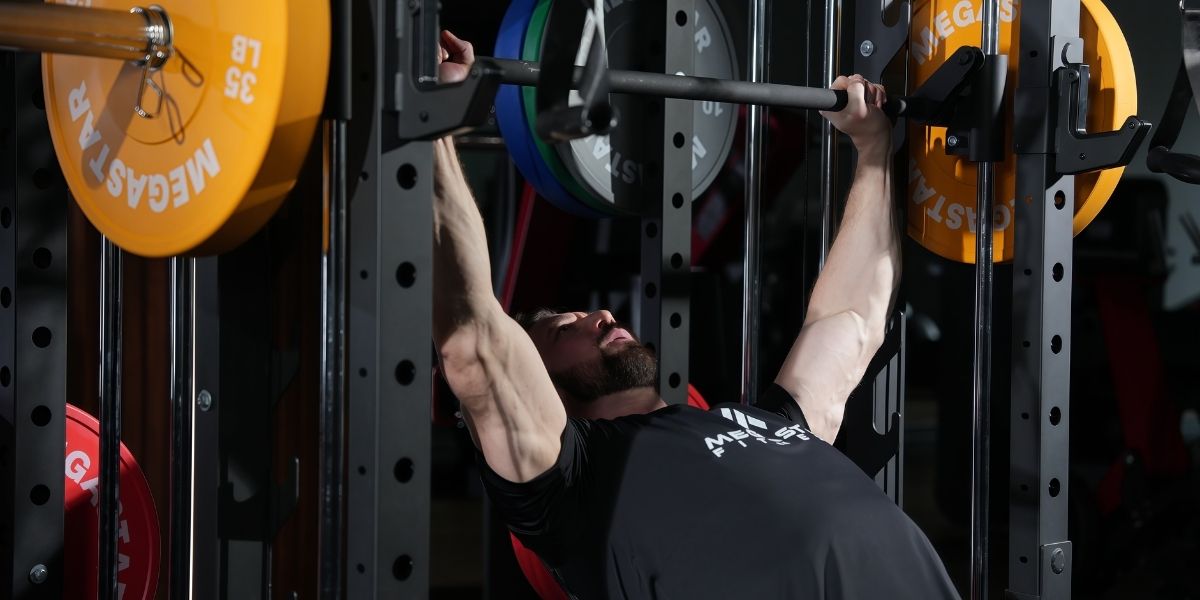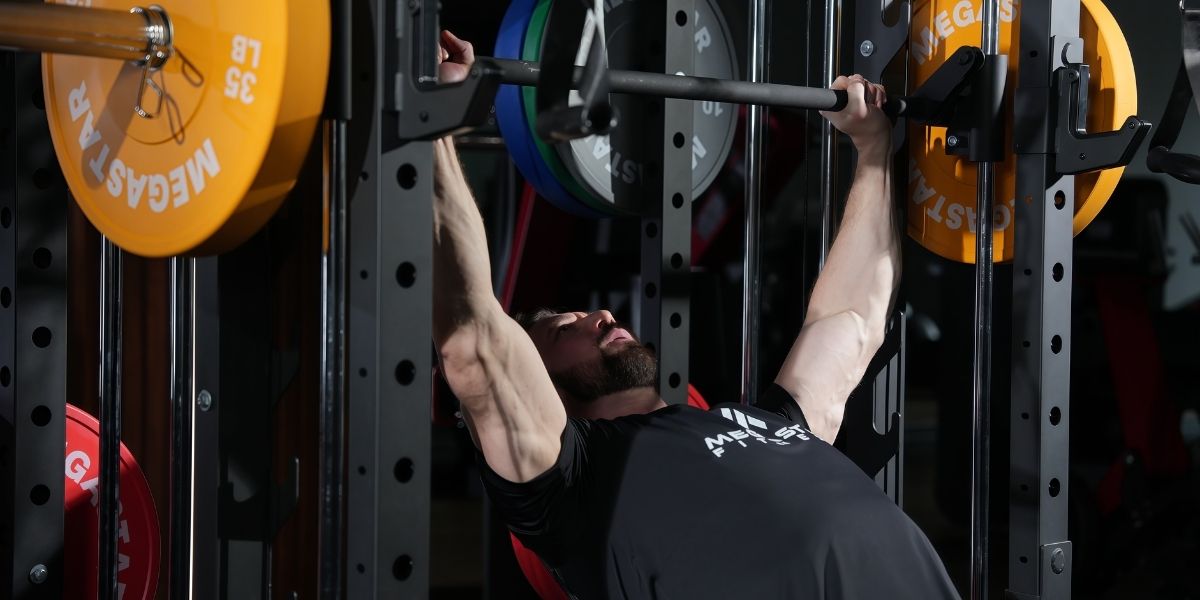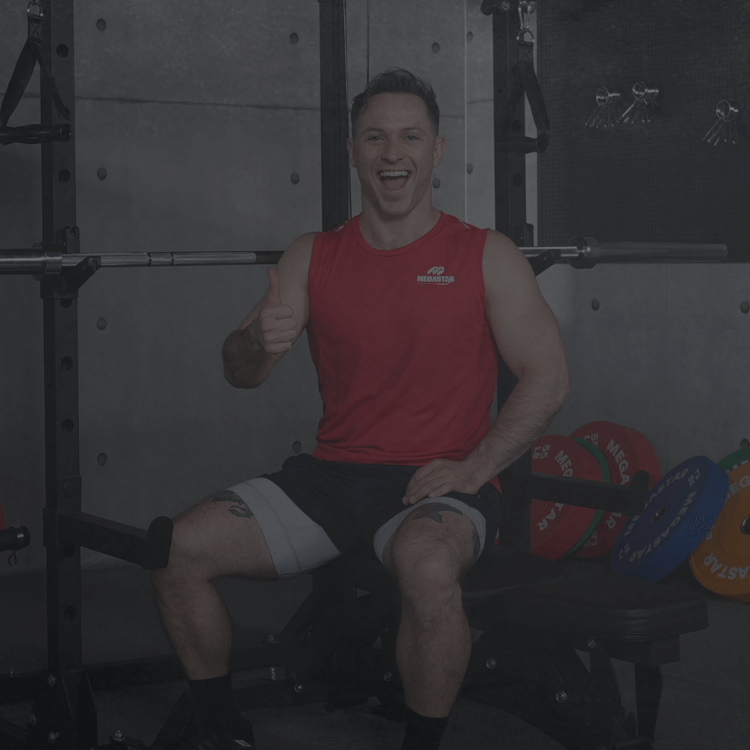Introduction: From Strong to Stronger
You’ve built a solid foundation. You know your way around the barbell, the dumbbells, and your rack. Now it’s time to push beyond — to train smarter, eat with purpose, and maximize every rep.
This Pro Muscle Growth Guide is built for experienced home gym athletes who want results that show: more muscle density, better definition, and next-level strength — all without leaving the garage.
Training Principles for Pro-Level Gains
1. Progressive Overload, Reimagined
Lifting heavy isn’t enough. To grow, your body needs measured progression.
- Track your lifts weekly.
- Increase either load (2–5%) or volume (1 extra set) every 2–3 weeks.
- Rotate between strength (4–6 reps) and hypertrophy (8–12 reps) phases for maximum muscle adaptation.
Pro Tip: Record your weights, reps, and rest times. Small progressions compound into massive gains.
2. Time Under Tension (TUT)
Growth happens when muscles work longer under control, not just heavier.
Slow down your eccentrics (the lowering phase). Try 3–1–1 tempo — 3 seconds down, 1 second pause, 1 second up.
This method triggers deeper muscle fiber recruitment and builds that “dense” look advanced lifters chase.
3. Split for Precision
At this stage, full-body workouts aren’t enough. Switch to a 4–5 day split focusing on specific muscle groups.
Advanced Home Gym Setup for Growth
You don’t need a commercial gym to train like a pro — just smart tools and structure.
Essential Equipment
- Smith Machine / Power Rack: Safe, heavy compound lifts — squats, presses, rows.
- Dual Pulley System: Perfect for isolation work and stability training.
- Adjustable Bench: Enables incline/decline variations to hit every angle.
- Attachments & Handles: Rope, D-handles, lat bar — variety drives growth.
Megastar Pro Tip:
Our P107 Smith Machine and P63 Power Rack come with true 2:1 pulley systems for smooth, stable resistance — ideal for controlled hypertrophy training.
Nutrition for Muscle Growth

1. Calculate Your Calories
Building muscle starts with a surplus — but a smart one.
Use this simple formula:
•BMR × Activity Level + 300–500 kcal = Growth Calories
2. Protein Is King
Aim for 1.6–2.2g per kg of body weight daily.
Focus on complete sources: lean meats, eggs, dairy, or whey isolate.
3. Carbs Fuel Growth
Carbs power your workouts and aid recovery. Don’t skip them.
Balance your macros: 40% carbs / 30% protein / 30% fats for steady gains.
Recovery and Hormonal Balance
1. Sleep = Growth
You grow in your sleep, not in your sets.
Target 7–9 hours per night to optimize testosterone, GH, and recovery.
2. Active Recovery
On rest days, use light cardio, mobility drills, and foam rolling to flush lactic acid and improve circulation.
3. Deload Every 6–8 Weeks
Lower weights to 60–70% for one week to allow your muscles and CNS to reset.
Sample Pro-Level Training Split (Optimized)
Weekly goal: Hypertrophy with strength carryover.
Progression: Add +2.5–5 lb (upper) / +5–10 lb (lower) when you hit top reps at the target.
Intensity target: 7.5–9 on work sets.
Rest: 90–120s on compounds, 60–90s on accessories.
Tempo (default): 2–0–2 (down–pause–up) unless noted.
Day 1 — Push (Chest / Shoulders / Triceps)
Barbell Bench Press — 4×6
Cue: Scapulas tucked, bar to mid-chest, drive through the floor.
Overhead Press — 4×8
Cue: Glutes tight, ribs down, bar path straight.
Cable Fly (Low→High) — 3×12 (2–1–2 tempo)
Cue: Hug the midline, slow stretch, full squeeze. (Swap: band fly)
Rope Triceps Pushdown — 3×15
Cue: Elbows pinned; finish with an outward flare.
Optional finisher: Push-up AMRAP 2 sets (strict).

Day 2 — Pull (Back / Biceps)
Barbell Rows — 4×8
Cue: Hinge hard, row to lower ribs, no torso swing.
Lat Pulldown — 4×10
Cue: Drive elbows to hips; chest proud. (Swap: banded pulldown / assisted pull-ups)
Dumbbell Curls — 3×12 (last 2 reps w/ 2-sec negatives)
Face Pulls — 3×15
Cue: Elbows high; pull to eyebrows; external rotation.
Optional finisher: 1–2 sets hammer curls 12–15.
Day 3 — Legs
Back Squats — 4×8
Cue: Sit between hips, knees track toes, full depth with control.
Romanian Deadlift — 4×10
Cue: Hinge; bar close to shins; feel hamstrings load.
Walking Lunges — 3×12/leg
Cue: Long step, torso tall, soft knee kiss to floor.
Leg Curl / Leg Extension — 3×15 each
Cue: Smooth tempo; full ROM; no momentum.
Optional finisher: Sled push or DB farmer carry, 4×30–40 m.
Day 4 — Upper Volume (Pump / Detail)
Incline Dumbbell Press — 4×10 (2–1–2 tempo)
Cue: Elbows ~45°, deep stretch, controlled lockout.
Pull-Ups — 4×AMRAP (stop 1 rep from failure)
Swap: Assisted pull-ups or lat pulldown if <5 reps.
Lateral Raises — 4×15 (partials + top squeeze)
Cue: Lead with elbows; hands slightly in front of body.
Biceps/Triceps Superset — 3×12 each
Ex: EZ-bar curl → Overhead rope extension, minimal rest.
Optional finisher: Cable chest fly 2×15 for extra chest volume.
Day 5 — Conditioning / Active Recovery
Rowing Intervals — 20–25 min
Ex: 40s hard / 80s easy × 10–12 rounds (stay nasal-breathing on “easy”).
Mobility Flow — 10 min
Hips, T-spine, ankles, shoulder IR/ER drills.
Plank + Side Plank — 3 rounds
Front plank 45–60s → Side plank 30–45s/side.
Optional: Easy bike/walk 10–15 min cool-down.
Notes & Tweaks
Deload every 6–8 weeks (volume −30–40% or load −15–20%).
Stuck on a lift? Run double progression (e.g., 4×8–10: hit 10s before adding weight).
Limited cables? Swap to bands or dumbbell variations (e.g., band fly, DB row, DB lateral).
Keep hydration + carbs around training for better pumps and performance.
Supplement Stack for Serious Lifters
Whey Isolate: Muscle repair and daily protein goals.
Creatine Monohydrate: Strength, power, and recovery.
Omega-3s: Joint and inflammation support.
Vitamin D3 + Zinc: Hormonal balance for muscle growth.
Conclusion: Train Like a Pro, Recover Like a Champion
Building serious muscle at home isn’t about equipment overload — it’s about precision, recovery, and consistency.
With the right training structure, smart nutrition, and recovery strategy, you can turn your home gym into a true powerhouse.
Remember: Progress isn’t accidental — it’s engineered.
Frequently Asked Questions
What’s the best recovery strategy for muscle growth?
Incorporate active recovery on rest days with light cardio, mobility drills, and foam rolling. Focus on improving circulation and flushing out lactic acid, which can speed up recovery and reduce muscle soreness.
Can I still see muscle growth with limited equipment?
Yes! Even with limited equipment, you can still see gains by using alternative exercises such as dumbbells, bands, or bodyweight variations. Focus on progressive overload and proper technique, even if you’re missing certain machines or cables.
How often should I deload to prevent overtraining?
Every 6-8 weeks, reduce your training volume by 30-40% or reduce the load by 15-20%. Deloading helps your muscles and central nervous system recover, ensuring consistent long-term progress without risking injury or burnout.
How important is sleep for muscle recovery?
Sleep is essential for muscle recovery and growth. Aim for 7–9 hours per night to optimize hormone production (e.g., testosterone, growth hormone) and allow your muscles to repair and grow effectively.







